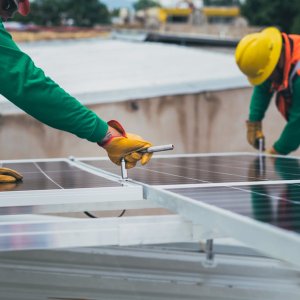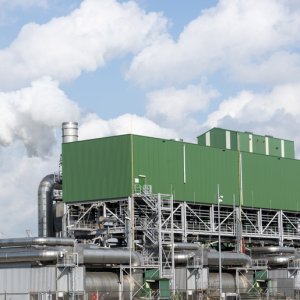The Death of the Gas Station Is Greatly Exaggerated

STORY INLINE POST
The first gas station opened in Seattle in 1907, when the Standard Oil Company (today Chevron) innovated with the first specialized facility for the sale of a product extremely necessary for the engines of the new vehicle that moved the elites of the time: the automobile.
Since then, gas stations have undergone severe changes that have gone hand-in-hand with technological advances and development, as well as the products that are sold, which have also evolved to meet an increasingly demanding mark, including vehicles with better combustion technology. This technological and commercial evolution has made companies incorporate more rigorous control systems that provide constant and safe resources.
However, 115 years after the launch of the first gas station in the world and the decarbonization policies adopted by many Western governments and the like appear set to put this century-old business model at risk of death. However, there is a new reality that is giving it verve and the opportunity to renew itself completely.
It is not for nothing that that service station is one of the most profitable businesses in the long term, to the extent that the model has become reference and part of our daily lives. The neighborhood service station is an always present element.
Today, less experienced minds or some extremely idealistic people have already set an expiration date for service stations; however, the issue is not the business model itself but how business is done. The fact is, there will always be vehicles for such stations to serve.
Whenever there is a need for mobility, there will be a service station that covers the need to fill the tank of our vehicle. Therefore, gas stations are not exempt from evolving, which leads to an important question: How is the gas station evolving in the midst of all these technological changes and the push toward decarbonization.
The answer is no less simple than the question.
However, we could say that the products that are sold will not be the biggest problem, since these will depend on the demand for the type of fuel required by the drive unit; that is, it will meet the contexts of the consumption demands of each region or country.
For example, countries such as Mexico or the US, which have a huge territory and different mobility needs, will have a very large mixed-fuel matrix, starting from the well-known fossil fuels (gasoline, vehicular natural gas, diesel, propane) to biofuels, electricity and the novel hydrogen. This will depend on the availability of resources, purchasing power of the consumer, storage, logistics and other costs that will be differentiators of the prices to the end user for each of the fuels and that will shape the consumption habits and the presence of supplier-manufacturer companies of these products that are necessary for mobility. his part of the evolution will depend on very complex contexts that, in the end, will be overcome by all the factors already indicated.
So, we will see a constant: fossil fuels will continue until they become victims of the technological substitution that gives rise to another preponderant fuel.. According to estimates and the behavior of the mobility market, this energy will be electricity and the substitution is likely in less than 20 years. To a lesser extent, hydrogen will also achieve a market position. The reality is that fossil fuels have an expiration date but not service stations.
On the other hand, service stations will undergoe an evolution that leads to great technological and physical changes.
On the physical side, this evolution of service stations will address new materials and a need that the companies that operate these businesses already have to integrate ESG policies or, at least, the circular economy. The goal is for these establishments to generate a smaller carbon footprint from their conception, design, construction and operation. This will lead to smaller service stations within our environment, using recycled materials or those from sustainable origins, and even having their own energy generation based on renewable resources. The most interesting thing is that this new way of conceiving service stations will also impact neighboring businesses, such as convenience stores or other commercial or service facilities that serve as satellites of the "anchor"service station itself. Therefore, it will also be a constant to see these integral and sustainable "business cores."
Last but not least, is the technology applied to this downstream business. It is here where the most important changes will take place and that, already today, are extremely visible.
Electronic payments, one-step invoicing and automated product dispatches are the most common, until the point of sale of the service station becomes a link with other services, such as bank transfers, tax payments, electricity or entertainment services, among others.
Technology has been a present and constant element in the evolution of service stations since 1907, integrating greater security and accuracy in the storage and dispatch of products for the benefit of the consumer, making this process faster and more efficient, so that the visit to the service station is safe and fast.
All these changes, as well as the evolution of commercial, environmental and economic competition regulations, are modifying the conception of the integration of commercial groups of fuel and energy outlets, especially in Mexico, where, since 2015, an environment with various governmental risks and supply and consumption challenges have been challenging companies and investors. These are new factors to consider when proposing to bring the benefits of a service station to the consumer, which must evolve to include the human factor as it relates to those who are in the business of mobility.
Finally, we can say that service stations have a promising future; however, companies and entrepreneurs can no longer yearn for the past or remain anchored to it. Undoubtedly, we are in a transition phase for service stations. If we want to continue in the game, we must print our own rules in the face of the challenges imposed on us by the energy transition.
The triumph or death of gas service stations is up to us. It should be remembered that, if business opportunities are not taken today, someone else will take them later.








 By Santiago Arroyo | Energy Regulation Specialist and CEO -
Thu, 10/13/2022 - 15:00
By Santiago Arroyo | Energy Regulation Specialist and CEO -
Thu, 10/13/2022 - 15:00
















